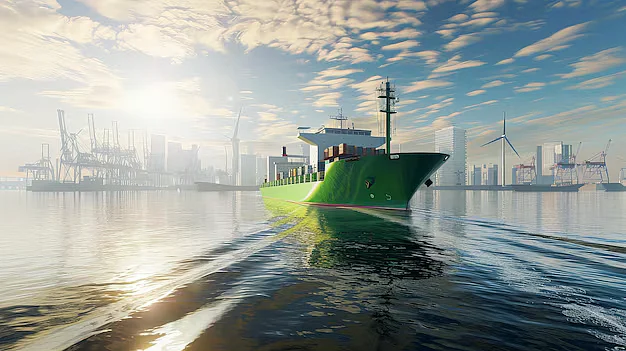India’s peninsular geography bestows upon it a coastline stretching approximately 7,500 kilometers, an expansive frontier where the nation’s economic vitality intertwines with its security imperatives.
This vast littoral zone, a mosaic of sandy beaches, mangrove forests and intricate creek systems, serves as a crucial gateway for trade and commerce, hosting 12 major ports and over 200 smaller harbors. These maritime hubs collectively handle the overwhelming majority of India’s trade, with about 95%by volume and 70% by value traversing these waters, underscoring the profound economic reliance on the seas.
However, this extensive coastline, while a fount of prosperity, also presents a formidable challenge for maintaining robust security. Its sheer length and diverse topography create vulnerabilities that have been exploited in the past, serving as silent corridors for illicit activities and threats to national stability.
The specter of the 1993 Mumbai blasts, where explosives clandestinely entered the nation through the Raigad coast, and the devastating 2008 Mumbai terror attacks, which saw militants infiltrate the city via the sea, remain etched in the nation’s memory, starkly illustrating the potential for grave consequences if coastal security is compromised. These incidents underscore the enduring need for vigilance and the continuous strengthening of our coastal defenses.
The 2008 Mumbai attacks stand as a chilling testament to the vulnerabilities inherent in a nation with such an extensive maritime border. The ease with which a group of terrorists navigated the Arabian Sea to land undetected on Mumbai's shores exposed critical gaps in the nation's coastal surveillance and response mechanisms.
This event served as a catalyst, prompting a significant reassessment and overhaul of India's coastal security architecture. While considerable progress has been made in the years since, persistent challenges and the evolving nature of threats necessitate a continuous commitment to improvement. One such enduring challenge is the pervasive issue of smuggling through coastal routes. This includes the trafficking of narcotics, with recent large-scale seizures at ports like Mundra highlighting the scale and sophistication of these operations.
The substantial quantities and high value of these seizures suggest the involvement of well-organized criminal networks, potentially with linkages to terror financing, posing a grave threat to both national security and societal well-being. The vastness of the ocean and the inherent difficulties in round-the-clock surveillance make sea routes particularly attractive for such illicit. Furthermore, the geopolitical landscape in India's vicinity adds another layer of complexity to coastal security.
Instability in neighboring countries like Sri Lanka, Bangladesh and Myanmar can lead to the potential for illegal immigration and refugee influx across porous coastal borders. Such cross- border movements, driven by political turmoil or economic hardship, present significant security challenges and can strain national resources.
Securing India’s coasts transcends mere policing; it is a fundamental geopolitical and economic imperative. The Indian Ocean region is of paramount strategic importance for global trade and energy security, serving as a critical conduit for the movement of goods and resources across continents.
As a major littoral state with significant interests in the region, India’s ability to safeguard its coastline is intrinsically linked to its capacity to protect its maritime trade routes and ensure its energy supplies. The Indian Ocean is also witnessing increasing geopolitical competition, particularly with the growing maritime presence of China, making the security of our maritime domain even more critical.
China’s expanding influence in countries like Sri Lanka, through strategic port investments and research vessel activities, raises concerns about potential surveillance and a strategic posture that could impinge upon India’s regional maritime interests.
Beyond trade, India’s coastal regions are rich in natural resources, most notably fisheries, which contribute significantly to the livelihoods of coastal communities and the national economy. The concept of the blue economy further underscores the vast potential for sustainable economic growth from our oceans, provided that the coastal environment is secure and well-managed. The coastal communities especially the fisherman serve as invaluable "eyes and ears "for security agencies.
Their service as our 'तट प्रहरी', our coastal sentinels, safeguarding the nation against external threats is indispensable. But these communities are also the primary responders to cyclones, tsunamis and other calamities. Therefore, enhancing their resilience through targeted training, resource allocation and awareness programs is paramount, fortifying both disaster preparedness and overall coastal security.
When coastal populations witness tangible efforts to safeguard their shores and feel actively involved in the security process, their sense of security and their willingness to cooperate with security agencies are significantly enhanced. Their intimate knowledge of local waters, the patterns of boat movements, and the ability to discern unusual activities make them critical partners in preventing illegal activities and detecting potential threats.
There are numerous instances where the alertness of coastal communities has led to the detection of suspicious movements or the apprehension of individuals involved in illicit activities. Government initiatives such as the Sagar Rakshak Dal and community interaction programs conducted by the Coast Guard recognize and aim to further strengthen this vital link between security forces and coastal residents.
These programs foster a collaborative security environment, empowering and incentivizing local populations to actively contribute to coastal vigilance. Recognizing and integrating the traditional ecological knowledge held by these communities can also significantly enhance both security and conservation efforts along the coast.
The security of India's coasts has a profound psychological impact on the nation's sense of well-being and national identity. Events like the Mumbai attacks can erode public confidence in the state's ability to protect its citizens. Conversely, a secure coastline fosters a sense of national resilience and strengthens the collective identity. Visible and effective coastal security measures can reassure the populace and contribute to an overall feeling of safety and stability.
In this context, the Central Industrial Security Force (CISF) has undertaken a commendable initiative – the "Great Indian Coastal Cyclothon" – as part of its56thRaising Day celebrations. Conceptualized around the inspiring theme "सुरक्षित तट, समृद्ध भारत" (Secure Shores, Prosperous India), this ambitious endeavor aims to heighten awareness about national security in coastal areas, specifically addressing threats such as smuggling of drugs, explosives, etc.
The sheer scale of the cyclothon is remarkable, with 125 dedicated CISF cyclists, including women, embarking on a rigorous 6,553kmjourney spanning 25 days. This unprecedented ride covers 11 states along the entire mainland coastline, stretching from Kori Creek in Gujarat to Bakkhali in West Bengal.
Throughout their journey, the cyclists are engaging with local communities through demonstrations and cultural performances involving CISF teams, schoolchildren, and NCC groups, effectively fostering a sense of shared responsibility. The participation of prominent personalities from the realms of Bollywood and sports in welcoming the cyclists at various points has further amplified the message, drawing wider public attention to this critical cause.
The success of the CISF Coastal Cyclothon underscores the pressing need for more such awareness campaigns and collaborative efforts from other government agencies, community organizations, and civil society groups to fortify India's coastal security. The potential for leveraging the rich traditional ecological practices and knowledge held by coastal communities in both security and conservation efforts remains largely untapped and warrants greater attention.
The CISF Cyclothon uniquely blends the growing emphasis on fitness and well-being with the critical issue of national security, making it a relevant and engaging approach to reach a broad spectrum of the population. This is the first initiative of its kind undertaken by any organization on such a monumental scale, covering the entirety of India’s mainland coastline.
The vision, meticulous planning, and dedicated execution of such a mega endeavor deserve commendation and serve as an inspiring example for future campaigns. India’s coastal security is inextricably linked to the nation’s economic prosperity and its standing in the global geopolitical arena. A secure coastline underpins maritime safety, fuels economic growth through unhindered trade and safeguards national sovereignty.
The success of the CISF Coastal Cyclothon offers a beacon of inspiration, demonstrating the power of collective action and public awareness in strengthening our national defenses. It is imperative that we build upon this momentum, fostering a sense of shared responsibility among all stakeholders – government agencies, coastal communities and every citizen – to ensure the long-term security and prosperity of India’s vital coastal lifelines.
The author is Dy. Commandant and PRO in CISF.
(Opinions presented belong solely to the author)





















